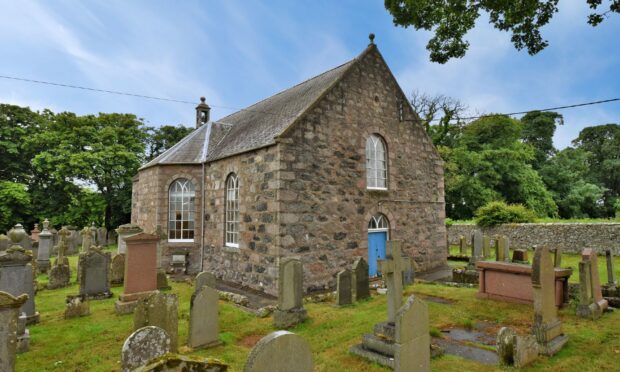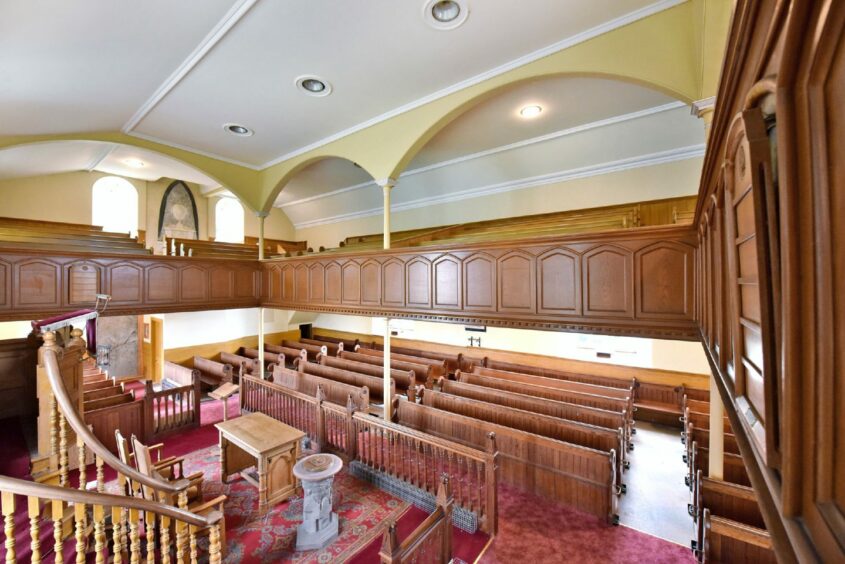A former kirk is only the market for £125,000 – and could be transformed into a heavenly home.
Foveran Church, about 12 miles north of Aberdeen, has been put up for sale by the Church of Scotland as part of their cost-cutting estates shake-up.
And for the right person, the B-listed property has plenty of scope.
Currently the church has mains electricity only, with the only heating source coming from electrical cylinder heaters and there is no water supply to the building or a drainage connection.
Built of solid stone, the kirk offers 3,200 sq ft of internal space and is being sold with an adjacent car park and glebe land to the west of the church.
However, its A-listed medieval artefacts, including the historic Turing Stone, are not included in the sale.
The stone is one of an historically important group of monuments in the church with two incised figures in armour and is described as well preserved, though broken in the middle.
Church filled with history
The Turing Baronetcy was created in 1638 for John Turing, who was granted the barony of Foveran by King Charles l. He was a supporter of the king and was taken prisoner by the Covenanters in 1639, the 17th century Scottish supporters of a Presbyterian Church of Scotland.
The renowned cryptographer and computing pioneer Alan Turing – the Bletchley Park codebreaker who saved millions of lives during World War II by decoding Germany’s encrypted messages – is a family descendant.
The kirk also features a 17th century bust of Sir John Turing, a Queen Anne hourglass attached to the pulpit, a stone font that incorporates a medieval column and a bronze plaque to the painter and etcher James McBey, who was born in Newburgh in 1883 and whose work is held by the National Portrait Gallery in London, the National Gallery of Art in Washington and Boston Public Library.
There is also a memorial to Lieutenant Charles Thomas McWilliam, of the 5th Gordon Highlanders attached to 51st Highland Division, who was killed in action aged 23 in March 18, 1916.
The churchyard contains three First World War Commonwealth graves.
The future of the building
The Church of Scotland believes the former kirk – which has an entrance vestibule with stairs to the gallery, vestry, main church area with pews, pulpit and rear vestibule – has plenty of potential going forward.
It suggests it could be used as a creche, day nursery, day centre, museum, art gallery, library or an educational establishment without the need to apply for change of use consent.
The building could also become a theatre, cinema or entertainment venue with the right permissions, or a retail space.
It could also become residential accommodation, subject to consent.
It has character arched, leaded windows and the “fixtures, including the pews and pulpit” are being sold with the building.
The Turing Stone is not part of the sale.
A Church of Scotland spokesman said: “The intention is that the Turing Stone, along with the font with its medieval column, should go to a museum.
“The Turing Stone is listed separately from the building, so this will require listed building consent from the local authority.”
The graveyard next to the kirk is owned by the local authority.
Foveran Church is one of many being sold off by the Kirk as it reduces the number of buildings in its portfolio in a move designed to ensure it is “lean and fit for mission in the 21st century”.



Conversation